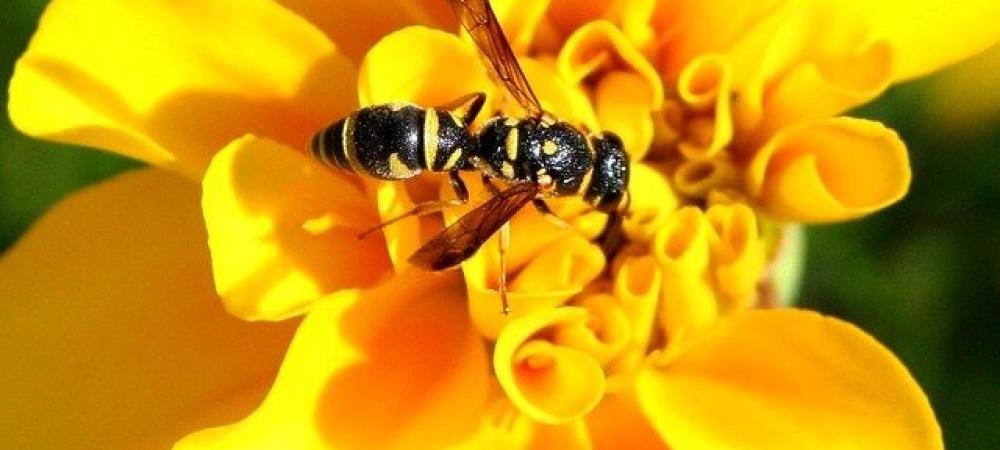Understanding Increased Wasp Activity: What Homeowners Need to Know

As we move into the warmer months, many homeowners in Canada may notice an increase in wasp activity around their homes. These industrious insects play an important role in ecosystems, but when they become too active, especially near homes, they can pose a threat to comfort and safety. Here’s what you need to know about increased wasp activity in Canada and how to protect yourself and your property.
When Are Wasps Active in Canada?
Wasps in Canada are most active during the late spring, summer, and early fall months. Their activity typically begins in late May to early June, when the weather warms up, and continues until September or early October, when temperatures drop and their nests begin to decline.
- Spring (April to June): Early spring marks the start of wasp activity, with queen wasps emerging from hibernation to start new colonies. At this stage, nests are small, and wasps are less aggressive.
- Summer (July to August): This is when wasp activity peaks. Nests are fully developed, and the colonies are in full swing. Wasps become more defensive and are more likely to sting if their nests are disturbed.
- Fall (September to October): As temperatures drop, wasps begin to prepare for winter. They may become more aggressive in their search for food. Towards the end of fall, colonies die off, and any remaining wasps become less active.
Why Are Wasps More Active in the Summer?
Wasp populations tend to peak during late summer and early fall. This is when their nests are at full capacity, and they’re working hard to gather food for their colony. Wasps are drawn to sugary substances and protein-rich foods, which is why you may notice them around garbage cans, fruit trees, or even BBQs.
Why Are We Seeing an Increase in Wasp Activity?
Several factors are contributing to the increased wasp activity across Canada, making it a more noticeable problem for homeowners:
Warmer Temperatures and Longer Summers
One of the most significant contributors to increased wasp activity is climate change. Over the past few years, Canada has experienced warmer-than-usual temperatures, leading to longer summers and earlier springs. These conditions provide wasps with more time to build their nests, forage for food, and expand their colonies. Wasps are more active in warmer conditions, and with a longer active season, their numbers continue to rise.
Mild Winters
Another factor is the mild winters Canada has experienced in recent years. In colder climates, wasps usually die off in the winter, but the warmer temperatures have allowed more queen wasps to survive through the cold season and start new colonies in the spring. This leads to a higher number of wasp nests, and more wasps are out looking for food and building nests.
Increased Availability of Food
Wasps are attracted to sweet and protein-rich foods. As more people spend time outdoors, especially in urban and suburban settings, the availability of these food sources has increased. Outdoor dining, BBQs, fruit trees, and even garbage left outside can attract wasps. The increase in outdoor activities and backyard gatherings creates more opportunities for wasps to find food, which in turn increases their activity near homes.
Urbanization and Habitat Disruption
In growing cities and towns, urbanization has led to the disruption of natural habitats. As forests and rural areas are replaced by buildings, wasps and other insects are forced to relocate to urban and suburban environments. Wasps are now more commonly found in places like attics, eaves, and wall cavities, making it more likely that homeowners will encounter nests near their homes.
Higher Nest Success Rates
With better weather conditions and an abundance of food sources, wasp colonies are also more likely to thrive. The combination of mild winters and a favorable environment has led to larger nests and more active colonies during the summer and fall months. As nests grow in size, wasps become more defensive, increasing the chances of stings if the nest is disturbed.
Local Factors Contributing to Wasp Activity
In many parts of Canada, especially in the summer months, the combination of a warm climate and abundant food sources creates the perfect environment for wasps to thrive. Cities like Toronto, Vancouver, and Montreal, known for their urban and suburban blend, have seen higher levels of wasp activity due to the availability of outdoor spaces like patios, gardens, and parks, where wasps can easily forage.
The increased presence of wasps in suburban areas is also linked to changes in urbanization, as more people are spending time outdoors, creating more opportunities for wasps to interact with human environments.
How to Prevent Wasps from Nesting Near Your Home
Prevention is always better than dealing with an infestation later. While it might be impossible to eliminate the risk of wasps entirely, there are several proactive measures you can take to significantly reduce the chances of a nest being established near your home. Here’s how you can make your property less inviting for wasps:
Seal Gaps and Cracks in Your Home
Wasps tend to build their nests in sheltered spots such as attic spaces, roof eaves, or even inside wall cavities. To keep them from finding a way inside, inspect your home regularly and seal any cracks or gaps around windows, doors, and rooflines. Pay particular attention to areas like:
- Vents and chimneys
- Gaps in window screens
- Cracks in the foundation or siding
- Gaps around utility pipes and wires
Using caulk, weather stripping, or expanding foam can help close up small openings, making it harder for wasps to find a place to nest.
Maintain a Clean Outdoor Environment
Wasps are drawn to food sources, particularly sugary substances and protein-rich foods. Keeping your outdoor spaces clean can help deter wasps from gathering near your home:
- Cover garbage bins: Keep trash cans sealed tightly and, if possible, store them away from your home or in a shed. Wasps are attracted to food waste, especially sugary drinks or food scraps.
- Pick up fallen fruit: If you have fruit trees in your yard, be sure to pick up any fallen fruit as soon as possible. Overripe fruit is a major attractant for wasps.
- Store pet food indoors: Pet food left outdoors can also attract wasps. Make sure to store food bowls inside when not in use.
Eliminate Food Sources and Clean Up
Wasps are opportunistic feeders, and their attraction to food can become a major problem around your home. Here are some additional steps to eliminate food sources:
- Clean food and drink spills immediately: Wasps are attracted to sugary substances, including soft drinks, fruit juices, and spilled food. After hosting an outdoor event or BBQ, clean up any spills as soon as possible, especially around areas where wasps may be foraging.
- Close outdoor food containers: If you are eating or drinking outside, make sure food and drinks are sealed when not in use.
- Use food-safe cleaners: Clean outdoor areas, including patios and decks, using non-sugary food-safe cleaners to remove any residual scents that could attract wasps.
By eliminating food sources, wasps are less likely to be drawn to your property in the first place.
Use Wasp-Repelling Scents
Wasps are sensitive to certain scents, and you can use this to your advantage by planting or using natural repellents to keep them away. Consider the following:
- Essential oils: Wasps dislike strong scents like peppermint, eucalyptus, citronella, and lemongrass. You can create a natural repellent by mixing a few drops of essential oils with water in a spray bottle. Spray this mixture around outdoor sitting areas, doorways, and potential nesting sites.
- Herbs: Planting herbs like mint, thyme, or citronella around your home can also act as a natural deterrent. These plants have strong odors that wasps typically avoid.
Install Wasp Traps Early
Wasp traps are a useful tool for preventing wasp populations from growing around your property. Traps lure wasps with food-based baits, trapping them inside. You can buy pre-made traps or make your own using a plastic bottle. If you use a homemade trap, cut the top off a plastic bottle, invert it, and fill the bottom with sugary bait like fruit juice or soda. Hang the trap in areas where you’ve noticed wasp activity, such as near garbage bins or around your deck.
While these traps can help reduce the number of wasps, they won’t necessarily eliminate all of them, so combining this with other preventive measures is key.
Use Wasp Deterrents Near Your Home’s Entry Points
If you want to keep wasps away from your home’s entry points, consider using wasp decoys. Wasps are territorial and tend to avoid nesting near other colonies. By hanging a decoy nest, you can trick wasps into thinking another colony is already established in your area. These decoy nests are available online or at home improvement stores and can be hung in areas like eaves, patios, or around doorways.
Trim Back Overhanging Branches
Wasps like to build their nests in tree branches, especially those that hang close to or over your home. Keep trees trimmed and maintain a safe distance between branches and your home. This reduces the likelihood of wasps finding a suitable place to build a nest.
How to Get Rid of Wasps
